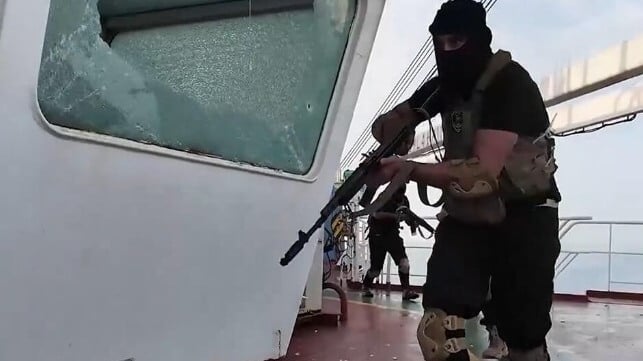Israel Can Deliver Active Suppression of Houthi Attack Boats

The Israeli attack mounted in the early hours of July 21, targeting port infrastructure in Hodeida, was conducted by drones, in contrast to previous Israeli attacks that employed manned aircraft.
Employing relatively light-payload drones means that the weight of ordnance that can be launched at targets is limited - considerably less than that of the heavy bombs which can be dropped from manned aircraft. But suitable for neutralizing many targets, missiles fired from drones can be delivered with greater accuracy, and the drone can loiter ready to attack until an optimal moment presents itself. Use of drones enables a persistent presence to be maintained, at minimal running cost and without risk to aircrews. The attack mode employed on July 21 therefore presents a viable alternative - and for some scenarios a better alternative - than dispatching an air armada of fighters, air defense suppression, tanker and surveillance platforms 1,250 miles down the Red Sea to the Yemeni coast and back.
Israel has not announced what equipment was used to mount the July 21 attack. It has in its inventory at least two medium range drones that could have carried out the task: the IAI Heron TP Eitan and the Elbit Systems Hermes 900 Kochav drones. Considering the Hermes 900, it could cruise 1,250 miles from base to target area, linger for 24 hours, and then return. It can use onboard standoff surveillance systems to loiter off and monitor potential targets. With a 450-kilogram payload, the Hermes 900 can carry a large number of missiles such as the Rafael Aerospike, able to attack moving targets at 30 km range instantly as attack parameters are met.
Thus it would be feasible for Israel to monitor the Houthi small boat and sea drone attack force in its bases, and to attack whenever hostile intent is detected. An aggressive stance such as this could complement (but be kept separate from) interceptions of incoming smuggled Houthi arms at sea. The latter mission has been conducted with increasing success by General Tareq Abdullah Saleh’s National Resistance Forces, as seen in early May and late June. General Tareq’s latest seizure has demonstrated that the Houthis are still dependent on Iranian-imported components for their more advanced drone and missile systems. As an armchair strategy for closing down the threat in the Red Sea, this has many holes, but rather fewer than reliance on naval defenses - and the hope that naval assets are in the right sea area at the right time to defend merchant traffic.
Local Yemeni sources have reported that during Israel’s July 21 drone attack, seven Houthi naval commandos were killed in a speedboat as they attempted to leave the port in Hodeidah for a routine mission. The team and the boat had been used in previous weeks to track, chase and attack commercial ships. After months of no apparent solution being in sight, this may be the first indication that a successful suppression strategy could be implemented.
